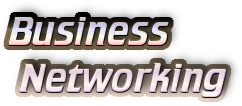This is point at which you are prepared to promote another person actively and unreservedly. The people that you advocate will be in your mind to scout and prospect for when you go to network events. You will look out for suppliers, prospects and potential partners.
The key aspect of this stage of the networking relationship is that it requires continual nurturing. You must keep looking to provide ongoing value to the relationship, eg:
· continuing to make connections and introductions
· using your expertise to provide information to them
As you do this for others, and are seen to do this, the level of trust that others have in you will increase and others will become advocates for you. For my story on how this approach can save you time and money see, 'Networking groups save time'
For more on the Advocacy Model of building trusted relationships in Business Networking see the following posts:
How to build trust in business relationships
Business Networking: The Advocacy Model
The Advocacy Model: Making a Contact
The Advocacy Model: Follow Up
The Advocacy Model, Develop Advocates
Good Networking!
Dave Clarke
Get 7 networking secrets for business success
business networking | business networking events | business networking podcast








